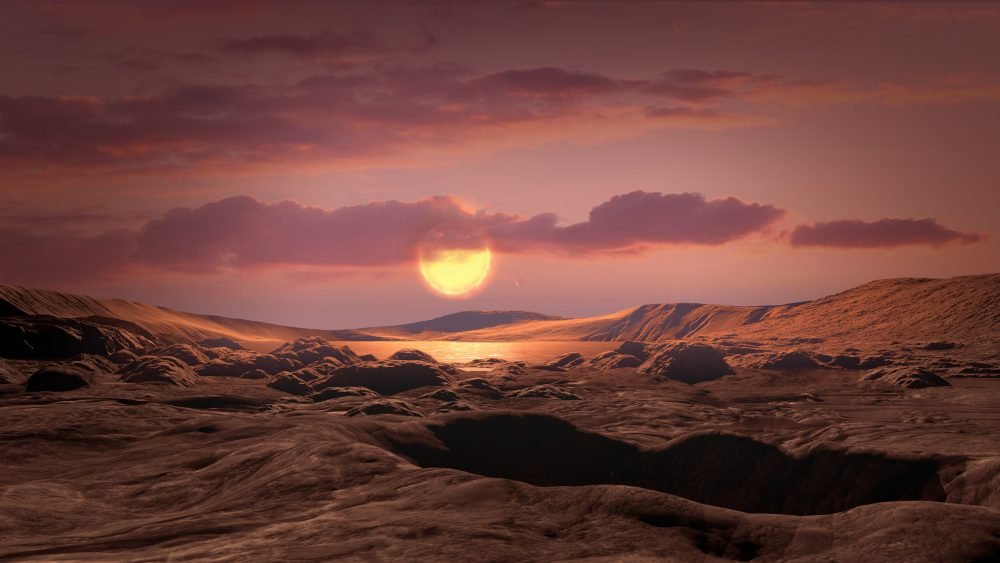Plan B? Newly discovered planet is the closest yet to a second Earth

If you’re fed up with the Earth’s people, pandemic and politics, you might be pleased to know there’s a newly discovered, untouched world out there that might be perfect for you — as long as you don’t mind red light or figuring out your own way to get there.
Astronomers say they’ve found a planet that more closely resembles our Earth than any other distant world they’ve seen to date, in a thrilling new discovery made possible by a dead space telescope.
The planet, dubbed Kepler-1649c, is a rocky world that’s six per cent larger than Earth, according to findings published in the Astrophysical Journal Letters earlier this month. Kepler-1649c orbits a distant red dwarf star, and is just far enough away from its red sun to exist in the so-called “habitable zone” where liquid water — and life — could potentially form.
It basically sounds like Krypton, Superman‘s fictional home world.
Of course, there’s no evidence that there are aliens on Kepler-1649c. But that also doesn’t mean there aren’t.
The planet was named Kepler-1649c (and not Krypton) after the now-defunct Kepler/K2 space telescope used to find its star. The telescope collected massive reams of data about potential Earth-like planets during its four-year mission, and helped astronomers discover nearly 200,000 new stars before it was shut down.
A computer algorithm initially discarded evidence of Kepler-1649c as a false positive, but an international team of researchers gave the data a second look and spotted the rocky world upon further inspection.
“In terms of size and likely temperature, this is the most similar planet to Earth that has ever been found with Kepler,” co-author Jeff Coughlin told Forbes. Coughlin works at the SETI Institute, an organization dedicated to looking for life on other worlds.
“It’s incredible to me that we just found it now, seven years after data collection stopped on the original Kepler field,” he said.
NASA described Kepler-1649c as an Earth-sized, habitable planet hiding in plain sight.
“Out of all of the exoplanets found by Kepler, this distant world — located 300 light-years from Earth — is most similar to Earth in size and estimated temperature,” the space agency said on its website.
The tricky thing about this exoplanet (the term for a planet outside our solar system) is its star, which is classified as an M-dwarf.
“Although M-dwarfs may be less hospitable than higher-mass stars like the Sun, their sheer numbers make it plausible that planets around M-dwarfs may be the most common habitable environments in the universe,” the study authors write.
In other words, astronomers still aren’t sure if M-dwarfs are better or worse than our own sun for potentially supporting life on an orbiting planet.
Kepler ultimately discovered 4,144 planets before it was shut down, including in the so-called “Goldilocks” zone where conditions might be just right to support life. Another space telescope, called TESS, took over its planet-hunting mission in 2018.
The next step to figuring out if there actually is life on Kepler-1649c is to examine its atmosphere from afar, according to Pamela Rowden, another co-author on the study.
“At some point we’re going to get to the point where we can actually look at these rocky planets and say, yeah, I can see water,” she said on a conference call announcing the discovery.
“Maybe [in] 20, 30 years’ time, that’s what we’ll be talking about.”



 Creators of mankind
Creators of mankind Description of “Tall white aliens”
Description of “Tall white aliens” Where they came from?
Where they came from? About hostile civilizations
About hostile civilizations The war for the Earth
The war for the Earth “Tall white aliens” about eternal life
“Tall white aliens” about eternal life Video: “Nordic aliens”
Video: “Nordic aliens” Aliens
Aliens Alien encounters
Alien encounters The aliens base
The aliens base UFO
UFO Technology UFO
Technology UFO Underground civilization
Underground civilization Ancient alien artifacts
Ancient alien artifacts Military and UFO
Military and UFO Mysteries and hypotheses
Mysteries and hypotheses Scientific facts
Scientific facts


















